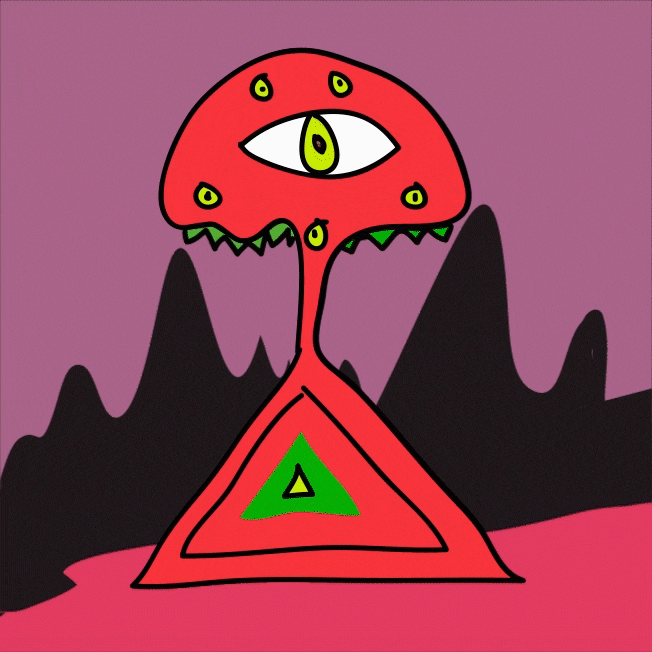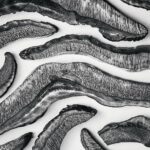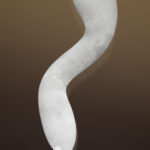You might take acid and go to work. In fact, you might take acid specifically because you are going to work. In Silicon Valley, because coffee only goes so far, the search for greater focus and productivity has led to a reboot of psychedelics: microdosing. To microdose is to take a small enough quantity of a drug to elicit no adverse side effects (i.e., no hugging of office plants), yet high enough to experience subtle physiological benefits. A typical microdoser takes about one-tenth of a full psychedelic dose. This is not the presentation of psychedelics as in the 1960s; no one is climbing aboard painted school buses at LinkedIn HQ. Timothy Leary’s famous call to “Turn on, tune in, drop out” has been adapted to fit within the constraints of family and even corporate life. Hell, you might make a lot more money on drugs. Tim Ferriss, the Silicon Valley investor and author of The 4-Hour Workweek, has said, “The billionaires I know, almost without exception, use hallucinogenics on a regular basis.”
I don’t know any billionaires. But I’ll tell you that one does not need to poke around long to find microdosers. A query on a parents’ listserv I belong to in Park Slope, Brooklyn, yielded several enthusiastic replies. In fact, a mother of four has become one of America’s most well-known microdosing advocates. Ayelet Waldman, a novelist, wrote a well-researched book about her thirty-day experiment with microdosing LSD, A Really Good Day. Waldman, a former federal public defender who represented many clients on drug charges, became open to the idea of microdosing after years of severe mood swings. Waldman represents a second major pool of microdosing users beyond productivity-hunters: those seeking an alternative remedy for anxiety, depression, addiction, and trauma. Over the month, she experienced an emotional transformation, but the book broadens beyond her initial goals into a contemplation on empathy and the value of mindfulness, as well as “the most creative month of my life.” It’s these “peripheral” benefits that I wanted to understand.
My interest in this story is also not about “recreational” use of hallucinogenics (my only experience with magic mushrooms ended on a frighteningly awkward note: I was seated at a wine bar with my girlfriend before realizing that the trip definitely was not over, but couldn’t figure out how to tell the waiter that I must leave). Nor will I be advocating microdosing as a replacement for all pharma.
Microdosing might be an effective remedy for mental health issues or a better stimulant for productivity, but I have a rather specific curiosity. Though I’m largely not sick anymore, I still feel the traces of a mysterious chronic illness that began eleven years ago and forced me to stop working and be cared for by family members. I sometimes experience disabling arm and hand pain when trying to execute fine motor movements. Back when I was in the thick of this illness, I was a frequent customer at the pharmacy, sampling muscle relaxants, antibiotics, neuro- inhibitors, supplements, steroids, opioids, and more. At best, I found some relief and calm, and, at worst, I faced side effects like insomnia, brain fog, slurred speech, and the kind of diarrhea that makes running more than one errand at a time a risky proposal.
I wouldn’t expect sub-perceptual doses of mushrooms to cure the illness’s hangover in my hands and arms (and I wouldn’t know since I haven’t tried it yet). A full cure may never happen but I would like to imagine that, someday, I might feel less separate from others because of how much I earn, or that the level of uncertainty I feel inside. I’m interested in the possibility of healing, not curing, through microdosing. If this leads me to becoming a billionaire, then so be it.
LSD’s History: From Science to Sacred
LSD took its first (literal) bicycle ride in the bloodstream of its creator, a Swiss chemist named Dr. Albert Hofmann, in 1943. Hofmann was riding home from the lab with his assistant after having ingested 250 μg of LSD–25. It was his twenty-fifth attempt at creating a chemical compound that would stimulate circulation and respiration. And how. Hoffman wrote, years later in his book,
LSD: My Problem Child, that during the ride, “Kaleidoscopic, fantastic images surged in on me, alternating, variegated, opening and then closing themselves in circles and spirals, exploding in colored fountains, rearranging and hybridizing themselves in constant flux.” This discovery is commemorated each year around the world on April 19 as “Bicycle Day”—which confirms my suspicions about bike mechanics.
Though Hofmann reportedly microdosed nearly until his death at age 102, it’s Dr. James Fadiman who popularized the typical protocol. Fadiman is a psychologist and former psychedelics researcher who wrote The Psychedelic Explorer’s Guide: Safe, Therapeutic, and Sacred Journeys in 2011. His recommendation is to take approximately 10 μg of LSD or psilocybin— a notably smaller fraction than Hofmann’s dose—every third day. Fadiman’s own history is like a lesson on the 1960s. As an undergrad at Harvard, his advisor was Richard Alpert, soon to be Ram Dass. After college, he went west to Stanford University for grad school and studied the effects of LSD until the FDA banned experimentation in 1966.
In the last few years, volunteers have allowed their brains to be scanned while on LSD or psilocybin (researchers have been able to study the effects of psychedelics again, albeit through a lengthy, bureaucratic process and without federal funding, since the 1990s). The results of these studies show that psychedelics appear to allow the parts of the brain responsible for hearing, vision, attention, and movement to communicate with one another—what researchers call a “more unified brain.” It’s theorized that these increased connections help produce the feeling of being one with the universe. And what might happen if you did the complete opposite of microdosing? In 1972, eight people at a San Francisco dinner party snorted what they thought was cocaine after the meal. According to The Western Journal of Medicine, within five minutes they all “experienced anxiety, restlessness, generalized paresthesias and muscle discomfort, vomiting, and physical collapse.” Ten minutes later they were admitted to the ER. They had accidentally snorted about 1000 to 7000 μg of LSD (on Reddit, I learned that at 600 μg, “unlike lower doses, your ego begins dissolving”). Several went into comas and experienced internal bleeding, but after twelve hours, all had completely recovered.
How is this possible? LSD, which has been clinically studied far more than psilocybin, appears to have what is considered a broad “therapeutic window”—that is, the difference between a “normal” or effective dose of the drug and an overdose is quite high (it has not been scientifically established yet what that upper dose limit of LSD dose is). Some drugs, like Tylenol for instance, have relatively narrow therapeutic windows and so the risk of overdosing is high.
One downside, and it is a downside that took me a long time to discover in my research, is that the same mechanism that stimulates neural connections has also been linked with heart valve fibrosis, which means too much fiber forming in the heart, and can lead to heart failure. This hazard is well known in drugs with similar chemical structures but hasn’t been a concern with psychedelics because no one was taking it every day.
Another obvious risk is that since LSD cannot be manufactured legally one doesn’t always know what arrives in the dropper or the tab. It’s recommended to purchase a vetted testing kit.
As both Mike Pence (and your drug dealer) will tell you, more research needs to be done on the effects of psychedelics. There may soon be more opportunity: Voters in Denver will decide this May whether to decriminalize psilocybin, and organizers in Oregon are close to bringing decriminalization to the ballot.
As I learned talking with a few unexpected microdosers—moms, a professional skateboarder, a vegan chef, and a young man who took small amounts of shrooms through a cancer diagnosis and treatment—it does much more. Compared to Xanax or Adderall, microdosing touches deeper aspects of one’s life (for better and worse).
A few studies have emerged recently indicating that small doses of psychedelics can be helpful for treating certain mental health conditions; however, no one I spoke with viewed microdosing as a “treatment” in the way that one might take an antibiotic for an infection, to target a specific problem with no expectation of greater gains. People don’t expect to feel more empathetic or connected to nature on Amoxicillin, for instance. Rather, the individuals I spoke with took LSD or psilocybin to restore a blocked connection: either with themselves, such as the mother who was filled with so much trauma and fear that she literally couldn’t stop running; or with their pasts, such as the young man who feared that he would die from chemotherapy like family members before him; or the chef in Bedford-Stuyvesant, Brooklyn, who needed to renew a connection to nature before she could step outside of her depression.
Rather, The experience of this newer generation of psychedelics users begs the question: How did we ever expect to feel happy or healed without qualities like empathy, mindfulness, and a connection to the natural world? Can microdosing, then, be a way to treat the ways in which we experience dis-ease? And, if microdosing is medicinal (as many I spoke with claimed), then what exactly is being healed?
Connecting the dots
In June 2018, Berlin Bukher, a Brooklyn mother in her mid-thirties, started taking 20 μg of LSD every third day (this is toward the upper range of the typical microdose). Bukher was struggling with intense anxiety that led her to overeat sugar, then compulsively run until, eventually, she crashed and developed severe adrenal fatigue. Her health coach suggested she try microdosing and she immediately agreed. “I knew I had to take a mind-altering substance to remove the block.”
As Bukher sat cross-legged on the couch, she had a quiet presence, directed inward like a concave lens. She saw her experience with microdosing as not just getting through a tough time but illuminating the cause of a situation. She believes that taking small amounts of LSD helped her “brain let go enough to start connecting the dots in [her] life.” She could see that the physical and emotional abuse she endured as a child had been following her. And, “The writing was on the wall that my marriage was coming to an end. And I pushed it in that direction when I started microdosing. I could see this was not a good situation for either of us.” In fact, Bukher suggested to her husband that he try microdosing to help with his anxieties. In the history of marital separations, this is surely a remarkable suggestion; and even more remarkably—he agreed.
Berlin said that the empathy they each gained from microdosing “brought us closer. We actually became excited for the possibility of each other being happy” in their own lives. “I feel complete gratitude to him.”
Depression isn’t even the word
Steve Jobs, who once said that dropping acid was “one of the two or three most important things” he’d ever done in his life, famously delayed receiving conventional treatments for his pancreatic cancer in favor of alternative remedies. He later said he regretted this decision. When Ty Decaires was diagnosed with Hodgkin’s lymphoma at twenty-four years old, his microdosing of psilocybin wasn’t an alternative to conventional cancer treatments; it pushed him to finally undergo chemotherapy.
Ty is a first-generation Caribbean- American, with long, neatly pulled-back dreadlocks and glasses. He recounted, “Even though I was dying every day, there was this really intense blockage from fear. I was turning down conventional treatment because, I guess, I was afraid of the side effects and there was a history of illness in my family. The people who got sick always relied on conventional methods and it never worked for them.” In fact, his grandmother died during remission from cancer. “I always believed the treatment was the killer,” he said.
Microdosing helped him with the everyday anxiety and emotional strain. “I was going in and out of a very dark place. Depression isn’t even the word. It was only through contemplating my situation, all under microdosing, that I was able to let go of my fear and see through it.” He accepted chemo and finished his sixth course of treatment on December 31 , 2018.
To be clear, Ty doesn’t believe psilocybin cured his cancer, but it did allow him to step outside of his normal perspective.
“You might take acid and go to work. In fact, you might take acid specifically because you are going to work.”
Plants are everything in my life
Similar to Ty, Carolyn Guerard Cale started microdosing psilocybin in 2017 to shift from a stuck place. In her view, the natural world healed her from two angles: The mushroom she ingested and the plants that she felt increasingly connected to as a result of taking mushrooms. After her first two or three doses, she said she felt the “most focused and sharpest I’ve ever felt in my life. It was the closest I felt to amphetamines which I used to be prescribed.” Microdosing was “all the good parts of Adderall but without that malicious undertone.” But Carolyn didn’t take psilocybin just to focus. She had struggled with depression her whole life and “didn’t want to associate with the diagnoses I was given. The [clinical] words took away from the healing process. I didn’t want to concentrate on the storyline of my life.”
This idea of “dropping the storyline” of one’s life is something that you’ll hear if you spend more than a couple of hours at a meditation center. Microdosers were echoing phrases I’ve long heard in Buddhist circles about “dropping the storyline,” or acknowledging that what we tell ourselves about life isn’t always the whole picture. Below our ideas is a raw reality that we can feel through our senses but not fully express.
The other big difference for Carolyn between psilocybin and Adderall was the connection to nature. She is a plant-based chef, and said microdosing “brought me outside myself. I feel a much deeper respect for plants. I can feel the energy of plants. That idea of the gardener who talks to their plants before he cuts them, this makes sense to me now. Even just walking by, I have a sharper eye for edible plants.”
I asked Carolyn whether she was worried about any health risks from microdosing. Her answer was unambiguous: “No. It’s obvious that plants are my friends.”
THE RISKS: TOO MUCH HEART?
A Second Chance after a Bad Trip
Is microdosing safe? In the absence of clear scientific consensus, any conversation around the safety of psychedelics inevitably turns anecdotal. Didn’t everyone’s high school have a senior who burned out because he took too much or bad acid? There’s also the famous story of Art Linkletter’s daughter who jumped out of a six story window in West Hollywood, and whose death he blamed on a “bum trip” of LSD.
Alex Olson, a professional skateboarder, had these anecdotes in mind when he told me that he was initially concerned microdosing could trigger a mental break—maybe even activate some dormant illness like schizophrenia. After taking a self-administered test for schizophrenia online, which proved negative, he decided to try psilocybin. A bad trip when he was seventeen with an ex-girlfriend had turned him off mushrooms, but now, after reading books and listening to podcasts with scientists, he felt ready. Still, he remained attuned to the way the drug had been manipulated in public discourse. Alex pointed out that Richard Nixon had created a war on drugs as a way to boost his failing presidency, distract from scandal, and vilify liberals. It worked! When Nixon declared Timothy Leary as “the most dangerous man in America” in 1970, 23 percent of Americans thought drugs were the number one problem facing our country (we were in Vietnam at the time!).
Though anecdotal evidence about psychedelics is all over the place, thousands of doses were administered in therapeutic and research settings before LSD was criminalized. In the nearly eighty years since LSD was first synthesized, it’s estimated that nearly twenty million Americans have used it, and as of 2008 there have been no documented deaths from LSD overdoses (Debbie Linkletter’s death was ruled a suicide and there was no detectable drugs in her bloodstream).
Alex grew up around professional skateboarders in Southern California (his father, Steve Olson, was also pro). Several older skaters told him that every time they took mushrooms, they learned a new trick. “They all said, ‘I was so connected to my board, I wasn’t thinking, just feeling.’” But Alex hasn’t tried skating while dosing — he’s not using it to become a better skateboarder. Instead, “I’ve become much more empathetic and curious,” he said. Berlin believes, “When you let go of fear, on some metaphysical level, you strike people as more open.” I don’t have any metaphysical measuring equipment, but what Berlin said seems true of the people I interviewed. Once we started talking, it felt irrelevant to gather their biographical details like age, occupation, where they live, etc. Those questions would have been like asking an old friend what their original email address was. We were already closer than that.
These microdosers were not trying to gain mastery of their bodies or their lives. This wasn’t a productivity hack. When we’re obsessed with a goal— like making money or even something laudable like curing anxiety—life can get very narrow. There’s so much we need to push away in order to keep making progress. Part of what microdosing seems to heal is our lack of interest in the wider world. It’s stirring to imagine that through a safe dose and tested regimen, we could not only treat trauma or anxiety, but also feel more connected and bound to the human tribe.
I can almost taste it on my tongue.
Dan Cayer lives in New York City and is writing a book about how to transform the experience of pain and illness into a path of openness and kindness. He regularly leads workshops and retreats incorporating meditation and the Alexander Technique.






